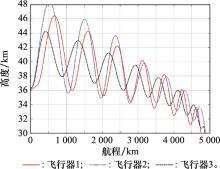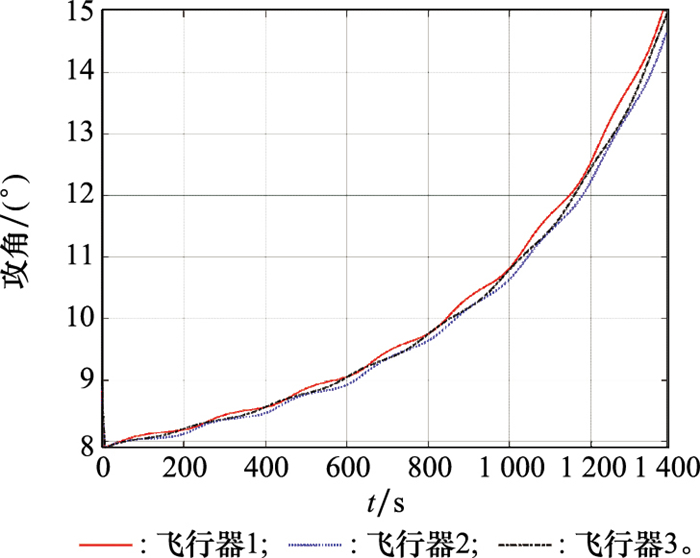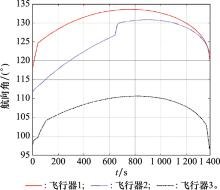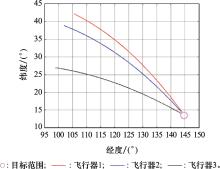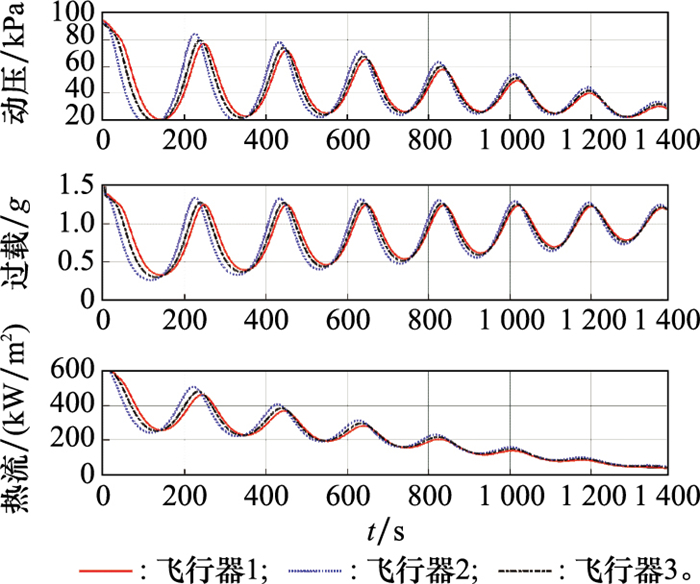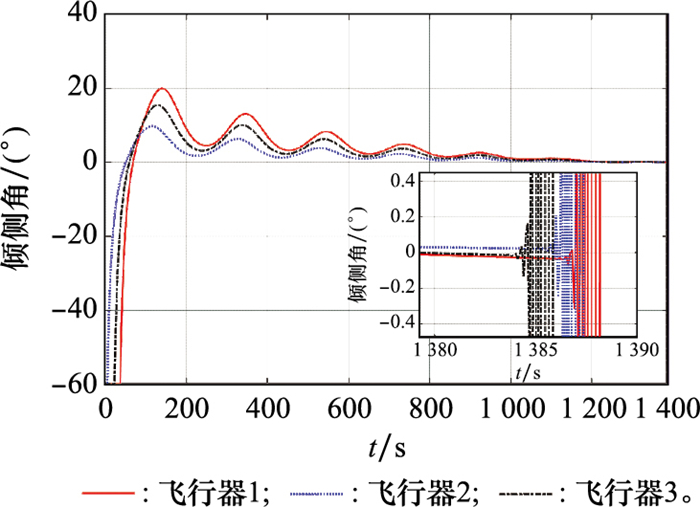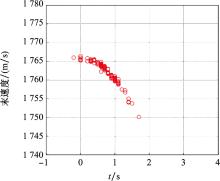Systems Engineering and Electronics ›› 2025, Vol. 47 ›› Issue (2): 580-590.doi: 10.12305/j.issn.1001-506X.2025.02.24
• Guidance, Navigation and Control • Previous Articles
Cooperative guidance method of high lift-to-drag ratio aircraft based on sliding mode control
Bo GUO1, Ming TIE1,*, Wenhui FAN2, Chuanxu LI1
- 1. Science and Technology on Space Physics Laboratory, Beijing 100076, China
2. Department of Automation, Tsinghua University, Beijing 100084, China
-
Received:2024-01-08Online:2025-02-25Published:2025-03-18 -
Contact:Ming TIE
CLC Number:
Cite this article
Bo GUO, Ming TIE, Wenhui FAN, Chuanxu LI. Cooperative guidance method of high lift-to-drag ratio aircraft based on sliding mode control[J]. Systems Engineering and Electronics, 2025, 47(2): 580-590.
share this article
| 1 |
DING Y B , YUE X K , CHEN G S , et al. Review of control and guidance technology on hypersonic vehicle[J]. Chinese Journal of Aeronautics, 2022, 35 (7): 1- 18.
doi: 10.1016/j.cja.2021.10.037 |
| 2 | WU T C , WANG H L , LIU Y H , et al. Learning-based interfered fluid avoidance guidance for hypersonic reentry vehicles with multiple constraints[J]. ISA Transactions, 2023, 139 (8): 291- 307. |
| 3 |
JIA X , WU S T , WEN Y M , et al. A distributed decision method for missiles autonomous formation based on potential game[J]. Journal of Systems Engineering and Electronics, 2019, 30 (4): 738- 748.
doi: 10.21629/JSEE.2019.04.11 |
| 4 | LIANG Z X , REN Z , LI Q D . Evolved atmospheric entry corridor with safety factor[J]. Acta Astronautica, 2018, 143 (2): 82- 91. |
| 5 | ZHANG D , LIU L , WANG Y J . On-line reentry guidance algorithm with both path and no-fly zone constraints[J]. Acta Astronautica, 2015, 117 (12): 243- 253. |
| 6 | YOU H , CHANG X L , ZHAO J F , et al. Three-dimensional impact-angle-constrained cooperative guidance strategy against maneuvering target[J]. ISA Transactions, 2023, 138 (7): 262- 280. |
| 7 |
ZHAO J , ZHOU R , DONG Z N . Three-dimensional cooperative guidance laws against stationary and maneuvering targets[J]. Chinese Journal of Aeronautics, 2015, 28 (4): 1104- 1120.
doi: 10.1016/j.cja.2015.06.003 |
| 8 | SONG J H , SONG S M , XU S L . Three-dimensional cooperative guidance law for multiple missiles with finite-time convergence[J]. Aerospace Science and Technology, 2017, 67 (8): 193- 205. |
| 9 | WANG X H , LU X . Three-dimensional impact angle constrai-ned distributed guidance law design for cooperative attacks[J]. ISA Transactions, 2018, 73 (2): 79- 90. |
| 10 |
LI J F , ZHOU J X , YAO J F , et al. Experimental observations of communication in blackout, topological waveguiding and Dirac zero-index property in plasma sheath[J]. Nanophotonics, 2023, 12 (10): 1847- 1856.
doi: 10.1515/nanoph-2022-0800 |
| 11 |
LEE J I , JEON I S , TAHK M J . Guidance law to control impact time and angle[J]. IEEE Trans.on Aerospace and Electronic Systems, 2007, 43 (1): 301- 310.
doi: 10.1109/TAES.2007.357135 |
| 12 |
KIM T H , LEE C H , JEON I S , et al. Augmented polynomial guidance with impact time and angle constraints[J]. IEEE Trans.on Aerospace and Electronic Systems, 2013, 49 (4): 2806- 2817.
doi: 10.1109/TAES.2013.6621856 |
| 13 |
JEON I S , LEE J I , TAHK M J . Impact-time-control guidance law for anti-ship missiles[J]. IEEE Trans.on Control Systems Technology, 2006, 14 (2): 260- 266.
doi: 10.1109/TCST.2005.863655 |
| 14 | GUO Y H , LI X , ZHANG H J , et al. Entry guidance with terminal time control based on quasi-equilibrium glide condition[J]. IEEE Trans.on Aerospace and Electronic Systems, 2019, 56 (2): 887- 896. |
| 15 | LI Z H , HE B , WANG M H , et al. Time-coordination entry guidance for multi-hypersonic vehicles[J]. Aerospace Science and Technology, 2019, 89 (6): 123- 135. |
| 16 | 王肖, 郭杰, 唐胜景, 等. 基于解析剖面的时间协同再入制导[J]. 航空学报, 2019, 40 (3): 239- 250. |
| WANG X , GUO J , TANG S J , et al. Time-cooperative entry guidance based on analytical profile[J]. Acta Aeronautica et Astronautica Sinica, 2019, 40 (3): 239- 250. | |
| 17 | 周宏宇, 王小刚, 单永志, 等. 基于改进粒子群算法的飞行器协同轨迹规划[J]. 自动化学报, 2022, 48 (11): 2670- 2676. |
| ZHOU H Y , WANG X G , SHAN Y Z , et al. Synergistic path planning for multiple vehicles based on an improved particle swarm optimization method[J]. Acta Automatica Sinica, 2022, 48 (11): 2670- 2676. | |
| 18 | YOU H , CHANG X L , ZHAO J F , et al. Three-dimensional impact-angle-constrained fixed-time cooperative guidance algorithm with adjustable impact time[J]. Aerospace Science and Technology, 2023, 141, 108574. |
| 19 | ZHANG W J , FU S N , LI W , et al. An impact angle constraint integral sliding mode guidance law for maneuvering targets interception[J]. Journal of Systems Engineering and Electronics, 2020, 31 (1): 168- 184. |
| 20 | ZHAO F J , YOU H . New three-dimensional secondorder sliding mode guidance law with impact-angle constraints[J]. The Aeronautical Journal, 2020, 124 (1273): 368- 384. |
| 21 | 盛永智, 甘佳豪, 张成新. 弹道可调的落角约束分数阶滑模制导律设计[J]. 航空学报, 2023, 44 (7): 182- 195. |
| SHENG Y Z , GAN J H , ZHANG C X . Fractional order sliding mode guidance law design with trajectory adjustable and terminal angular constraint[J]. Acta Aeronautica et Astronautica Sinica, 2023, 44 (7): 182- 195. | |
| 22 | LI W , WEN Q Q , HE L , et al. Three-dimensional impact angle constrained distributed cooperative guidance law for anti-ship missiles[J]. Journal of Systems Engineering and Electro-nics, 2021, 32 (2): 447- 459. |
| 23 | LYU T , LI C J , GUO Y N , et al. Three-dimensional finite-time cooperative guidance for multiple missiles without radial velocity measurements[J]. Chinese Journal of Aeronautics, 2019, 32 (5): 1294- 1304. |
| 24 | 王雨辰, 王伟, 林时尧, 等. 考虑攻击时间及空间角度约束的三维自适应滑模协同制导律设计[J]. 兵工学报, 2023, 44 (9): 2778- 2790. |
| WANG Y C , WANG W , LIN S Y , et al. Three-dimensional adaptive sliding mode cooperative guidance law with impact time and angle constraints[J]. Acta Armamentarii, 2023, 44 (9): 2778- 2790. | |
| 25 | BAO C Y , WANG P , TANG G J . Integrated method of gui-dance, control and morphing for hypersonic morphing vehicle in glide phase[J]. Chinese Journal of Aeronautics, 2021, 34 (5): 535- 553. |
| 26 | SHENG Y Z , ZHANG Z , XIA L . Fractional-order sliding mode control based guidance law with impact angle constraint[J]. Nonlinear Dynamics, 2021, 106 (1): 425- 444. |
| 27 | 姜鹏, 郭栋, 韩亮, 等. 多飞行器再入段时间协同弹道规划方法[J]. 航空学报, 2020, 41 (S1): 171- 183. |
| JIANG P , GUO D , HAN L , et al. Trajectory optimization for cooperative reentry of multiple hypersonic glide vehicle[J]. Acta Aeronautica et Astronautica Sinica, 2020, 41 (S1): 171- 183. | |
| 28 | LIANG Z X , LV C , ZHU S . Lateral entry guidance with terminal time constraint[J]. IEEE Trans.on Aerospace and Electronic System, 2023, 59 (3): 2544- 2553. |
| 29 | JEON I S , LEE J I , TAHK M J . Homing guidance law for cooperative attack of multiple missiles[J]. Journal of Guidance, Control, and Dynamics, 2010, 33 (1): 275- 280. |
| 30 | CHO D , KIM H J , TAHK M J . Nonsingular sliding mode guidance for impact time control[J]. Journal of Guidance, Control, and Dynamics, 2016, 39 (1): 61- 68. |
| 31 | 徐慧, 蔡光斌, 崔亚龙, 等. 高超声速滑翔飞行器再入轨迹优化[J]. 哈尔滨工业大学学报, 2023, 55 (4): 44- 55. |
| XU H , CAI G B , CUI Y L , et al. Reentry trajectory optimization method of hypersonic glide vehicle[J]. Journal of Harbin Institute of Technology, 2023, 55 (4): 44- 55. |
| [1] | Xuehao LIU, Wenxue LIU, Chaosan YANG, Wenjing ZHU, Yu SONG, Jinhai LI. Optimization method of user quantity prediction based on GPR model [J]. Systems Engineering and Electronics, 2024, 46(8): 2721-2729. |
| [2] | Wenjian YING, Yusen CHENG, Xuan WANG, Shiyan SUN. Testability evaluation method of naval gun guided ammunition based on data fusion in development stage [J]. Systems Engineering and Electronics, 2024, 46(8): 2730-2737. |
| [3] | Wenwen ZHANG, Cheng ZHANG, Chenming ZHENG, Runbei CHENG, Tianle CHEN. Design of improved line-of-sight guidance law based on aircraft visual information [J]. Systems Engineering and Electronics, 2024, 46(8): 2779-2788. |
| [4] | Ningyun LU, Yang LI, Bin JIANG, Shoujin HUANG, Kun MA. Overview of design of testability and dot based fault diagnosis strategy for complex systems [J]. Systems Engineering and Electronics, 2024, 46(7): 2359-2373. |
| [5] | Ping YAN, Chaochang LI. Motion stability analysis of fin-controlled small supercavitating vehicle [J]. Systems Engineering and Electronics, 2024, 46(7): 2456-2464. |
| [6] | Xinyun ZHAO, Jianqiao YU. Multi-source force combined control method for novel agile projectiles [J]. Systems Engineering and Electronics, 2024, 46(5): 1734-1744. |
| [7] | Ruiyu BU, Biao WANG, Hongcheng LI, Chaoying TANG, Rinan ZHU. Design of trajectory tracking model predictive control scheme in terrain following [J]. Systems Engineering and Electronics, 2024, 46(4): 1383-1392. |
| [8] | Qiushi ZHENG, Weichun XU, Minghan ZHAO, Naixing LI, Xuxin BAO. Research on roll control technology of trajectory correction fuse with active-canards [J]. Systems Engineering and Electronics, 2024, 46(4): 1412-1421. |
| [9] | Yang GUI, Bochao ZHENG, Peng GAO. Sliding mode attitude control of quadrotor UAV based on NESO-LFDC [J]. Systems Engineering and Electronics, 2024, 46(3): 1075-1083. |
| [10] | Shuaihao YAN, Rui QIAN, Mingying WEI, Yongbin ZHENG. Improvement of return difference matrix singular value method and stability analysis of MIMO system [J]. Systems Engineering and Electronics, 2024, 46(11): 3874-3882. |
| [11] | Liang ZHANG, Si LIU, Kangwei ZHAO, Cunming HU. Parameters design and stability margin analysis of adaptive augmenting control for launch vehicle [J]. Systems Engineering and Electronics, 2024, 46(1): 271-279. |
| [12] | Duo ZHENG, Yu HAN, Tianyu LU, Zhichen CHU. Multi aircraft cooperative guidance technology considering collision avoidance constraint task allocation [J]. Systems Engineering and Electronics, 2023, 45(9): 2873-2883. |
| [13] | Yushi JIANG, Yang CHEN, Lu GAO, Ligen CAI, Jixing LYU. Predefined-time adaptive control for heavy-lift launch vehicles [J]. Systems Engineering and Electronics, 2023, 45(8): 2570-2577. |
| [14] | Jun YOU, Ke ZHANG, Zhiguo HAN, Tianxing CAI, Cheng ZHANG. Three-dimensional super-twisting slide mode cooperative guidance law with line-of-sight angle constraint [J]. Systems Engineering and Electronics, 2023, 45(7): 2138-2149. |
| [15] | Xu CHEN, Yao XIAO, Lingyu YANG, Jing ZHANG. Stability analysis of radome parasitic loop based on simplified model [J]. Systems Engineering and Electronics, 2023, 45(6): 1784-1796. |
| Viewed | ||||||
|
Full text |
|
|||||
|
Abstract |
|
|||||


